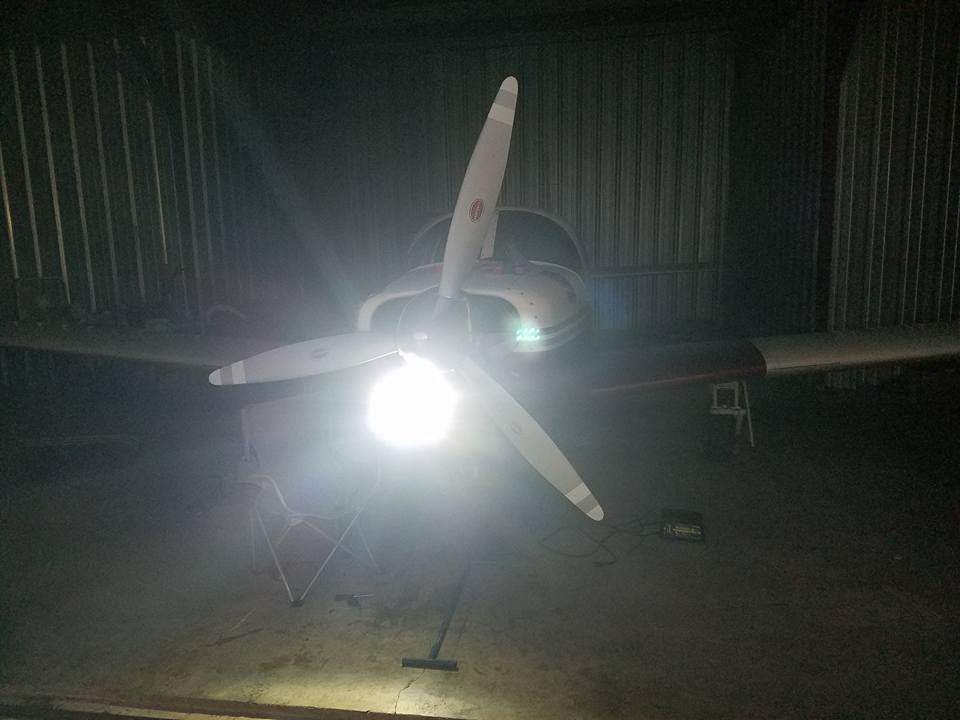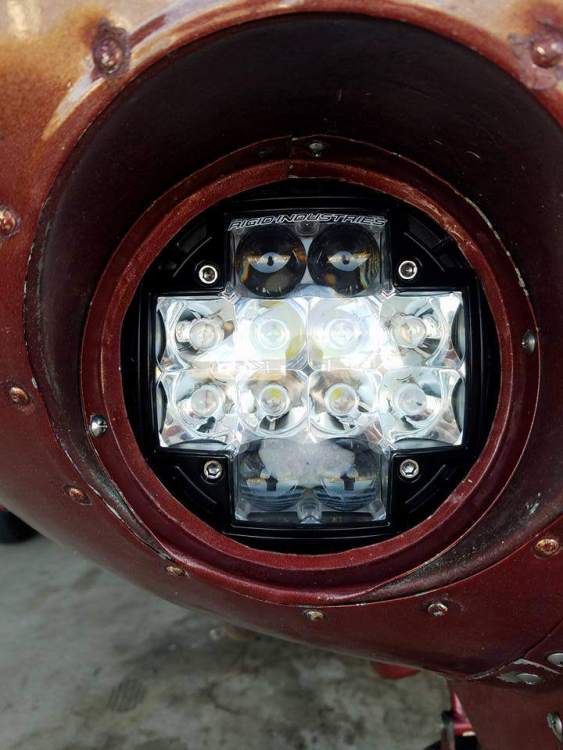Leaderboard
Popular Content
Showing content with the highest reputation on 03/13/2019 in all areas
-
Well, I haven’t posted a recent life changing medical issue I encountered 6 weeks ago. I got a simple, routine, small cut on my pinky finger on Tuesday, January 22th. An antibacterial soap cleaning and bandaid was all that was required and I went 54 hours with no pain or swelling, seemed a pretty benign situation. Then swelling and pain started, and within 3 hours of first symptom I had every finger and thumb swelling and in extreme pain. I even had pain in the palm, wrist, and shooting up to my elbow. Holy crap..... I went straight to my local hospital emergency department. Something was seriously wrong!!! After 8 hours of a pain level of 10, with nothing knocking out or even reducing the pain, I was sent to emergency surgery with an infection radiated from the finger, through my tendons, to my carpal tunnel area on Friday morning. An 8” cut to my wrist and complete open of the pinky (5-6 stitches) and 3.5 days of IV pain killers and antibiotics got me discharged by noon the following Monday. Transitioned to oral antibiotics and pain killers, it only took about 8 hours at home to realize this was going south again. Back to the emergency department, thankfully the same crew, with the doctor putting me under since he knew nothing from his pain killer arsenal was going to give me relief. Back into emergency surgery again early Tuesday morning, with a stitch count now exceeding 25 as the infected areas were expanded, my surgeon thought she had the infection cleaned sufficiently now. They installed a PICC line for a 21 day antibiotic regimen and I started a 10 week therapy program. It was determined to be Strep, which a pilot doctor later told me LIVES on our skin, as the strain of infection. I was also told had I delayed treatment at all, it would have spread to my bone, resulting in amputation of my left hand. HOLY CRAP!!!! So, although recovery has been excruciatingly slow, with no ability to squeeze fingers into a fist, yesterday and today were milestone moments. I have barely enough squeezing function to hold the side stick on my Lancair, but decided to fly with my flight instructor yesterday with an ace wrap holding my hand to the stick in case a gust came up that could jog the stick out of my hand. It went really well. Today I performed a medical flight and it went very well. Nice to be back in the air! Now just hoping I will not need further surgery to get finger function back!!! And......... 20 knot headwinds aren’t so bad in this plane. Tom10 points
-
It IS AMAZING how we take so many things for granted until we encounter something that really wakes us up. I was running 20-30 miles a week, doing 2 hour daily work outs, lost 20 pounds, getting in shape as a 63 year old competitive soccer referee, and had this crazy medical issue surface. Makes you appreciate life itself! Tom8 points
-
I’ve been a big fan of of the PC with Accu-Trak and AccuFlite, but lately have been tempted by one of the new autopilots coming to market. Both, the Accu-Trak and Accu-Flite just seemed a little sloppy in holding headings and track. I convinced myself that this is the way it always was. After annual, where I did the yoke shaft AD, it seemed a little worse. This past week, the system seemed exceptionally lazy for much of the flight, at times not even leveling the wings. This weekend I removed and cleaned the vacuum pilot valve....no real findings there. I started tracing things back, applying light vacuum to look for leaks and found the yoke disengage line was leaky. Pulling the yoke cover off, first thing I noticed was I had put the line on the wrong tube, it belongs on the innermost tube, however, I still had a leak. Focusing on the button, a visual inspection at the o rings revealed no obvious issues, however putting the button into the yoke revealed that the large (1/4”I’d x 1/16”) o ring was loose in the hole. Replaced it with a new one and it sealed up nicely. Test flight today in bumpy conditions and what a surprise. The system worked fantastic, has not performed this well in years...if ever. Instant response in wing level mode and held heading and track perfectly. It seems that a partial leak in the yoke button will allow the shuttle in the pilot valve to move part way....allowing some semblance of functionality, but not optimal functionality. In summary, sloppy wing leveler, check the o rings on the button. As a side note, in another thread I suggested removing the button if you want to disable the wing leveler for training or other reasons. Turns out, this likely wears the o ring in question, causing this issue. Otherwise this o ring remains static. Hope this saves someone a few $$.6 points
-
5 points
-
So I could be smiling like this!!!!!! For a little while I’ll be the newest Instrument Rated pilot:) Sent from my iPhone using Tapatalk5 points
-
After years of following this site, adding a contribution or two, and selling bits and pieces, I am now a Mooney owner. Hope to take delivery next week. Now let's have a competition - ask 20 indirect questions and guess what model it is. Winner gets $200 off best advertised street price of a JPI system. Aerodon3 points
-
I think most of the heavy weights that you’re looking at came that way from the factory. Most were optioned in such a way that they never had a useful load that approached anything close to the “standard” 1100lbs. The older machines are more pedestrian but tend to have higher useful loads ( I have a 67F model with 1060lbs useful). The conventional wisdom is that airplanes get heavier with age. That maybe true, but I would submit that it really should be the opposite. These days, charging systems are lighter as are solid state digital electronics. All other things being equal aircraft should be getting lighter. The reason they don’t is because of available equipment. There are now 50-year-old Mooneys flying around with more redundancy and situational awareness than a 767 had just 20 years ago. You can have a simple, IFR certified, XC aircraft with good useful load or you can get something very well equipped with less useful load. Keep looking until you find the right balance.3 points
-
But only the legal useful load is what matters. Obviously any errors in past calculations should corrected after a thorough review but a number of insignificant less than a pound changes without an update are not going to make large difference or create a safety of flight issue. Nor is re-weighing the aircraft considered a accurate error free method to re-establish empty weight. Frankly that is a much more error prone process that updating the weight balance with correct station and weight numbers. Mooney's are quite capable handling their full max gross takeoff weight and quite easily with significant margin. But the difference between lightly loaded and max gross weight can be significant; especially as we move up the Mooney models to the longbody with considerations for a takeoff max weight that exceeds max landing weight. But I would put much more emphasis on the need for the pilot transitioning to a new Mooney to work up to max gross weight learning how the heavier airframe handles along way so as to not be hugely surprised; especially at higher density altitudes. In the end, anyone purchasing the new aircraft is going to seek an airframe with as much useful load as they can. But getting to the OPs expectation for 1100 useful load, that is way too optimistic. A good useful load on a K is closer to 900 lbs, many are less than 900. A J can be a bit higher but I'll let some J owners give a realistic number. My 252 after converting to an Encore and going all glass panel is now 1127 pounds - but that is very rare.3 points
-
Mrs. Steingar is now recovering from a pretty major bout with the flu. Not the 24-hour variety virus that most folks get, but honest-to-Odin influenza A. One thing I have to keep reminding her is that depression and negativity reduce immune function and prolong disease. She's been pretty miserable, and its been along climb back to health that isn't done yet. I would say the same to anyone. The number one thing to do is keep your spirits up. And Tom I'm glad you're on the mend enough to fly that gorgeous airplane you built. You will never understand the level of my admiration to anyone who can pull off a trick like that.3 points
-
I spent the last 30 days of flying looking like this..... Sent from my iPhone using Tapatalk2 points
-
Well guys, I managed to get the temps down 30 degrees. Used RTV silicone for all cracks and holes that I could in the baffling. Then used some metal tape around the doghouse where it bolts down. Flew it yesterday and the warmest cylinder was 428 degrees. I am calling that a good win. In cruise, they came right on down to the lower 300's. Thank you everyone for the help. I am sure there is a little more to do but at least it isn't cooking nearly as bad!2 points
-
2 points
-
2 points
-
Glad @Yooper Rocketman is recovering well. I believe his post said this was a strep infection. MRSA is a staph infection therefore different bacteria altogether. Most MRSA infections are community acquired now, not hospital acquired. What he described sounds more like flexor tenosynovitis which is a purulent infection that travels along the flexor tendon sheath and can be quite damaging. Sounds like he was lucky that they found it quickly and intervened aggressively. Usually not caused by a simple prick to the skin, but something that punctures the flexor tendon sheath. I agree with physical therapy being your best friend now. It’s a combination of working hard and taking it easy that will help your recovery. Keep at it!2 points
-
Regardless, it's probably the Mooney with the most cabin space.2 points
-
Much of my career was with two companies, that were small, innovative and agile. I had a front row seat to see what happened when purchased by mega companies. It was worse for the worker bees than it was for the customers, but over time the technologies grew stale. I didn’t complain because I benefitted, both times, but eventually customers and remaining employees suffered in some way. The good news is that the young entrepreneurs got the technology in motion and it will be with us from now on. Even if we move to different vendor, we will be flying with EFB’s from now on, thanks to entrepreneurial, forward thinking young people.2 points
-
2 points
-
I'm hoping they changed it because they realized the same thing would be thought by a lot of people. 280kts everything stable. Suddenly add full power, pitch up 4 degrees then immediately pitch down 50 degrees. I'm not sure what to make of that2 points
-
He really should try it in the air before doing the conversion. Easy to raise below 90mias and easy to lower at 120mias. Doing it on jacks is not the same.2 points
-
LOL! I wouldn’t feel bad at all. Think of it as payback for all of us who had to do NDB approaches and timed holds at an intersection using 1 VOR. Sent from my iPad using Tapatalk Pro2 points
-
I spoke with Gensys and they say it sounds like a pitch servo solenoid is sticking.1 point
-
I recently had SWTA weigh my 252. The number they came up with was 32 lbs lighter than what was in my log book. So we wrote up the new one and put it in the log. The empty weight of my 252 is 2058 and gross 2900, which gives me a UL of 842. The Encore conversion will raise the gross to 3100, I believe. A friend once told me that they fly just fine at 3100 gross. BTW... SWTA drained all the fuel, then added back the unusable amount, carefully measured. We had a fresh oil change. And the plane was carefully leveled. The scales used are the expensive one's but I can't say when they were calibrated.1 point
-
1 point
-
This is something I learned from a friend who gear upped his 210 due to a mechanical failure. He got a good price and insured it for that amount. You insure for 75k and have an incident. They find out what scrap value, and let's say that's 18-20k. They subtract that from the insured value. So once your damage comes close to 50k, they total you. Easy to total a vintage plane since prop and engine are so pricey. Add some sheet metal and labor, and you see where this goes. I'm not an insurance expert, and I just heard this second hand, so take it with a grain of salt.1 point
-
If the seat slides back with a nose high attitude, the yoke & throttle is that last thing you want to yank back on.....1 point
-
That narrows it down to K model, being "forever type" that points to the 252 or Encore, making it 252 or 252/Encore more likely if only because of the numbers.1 point
-
Mostly agree, but the chess game was 100 times better than F1 I hope Rins shakes up the top three on a constance basis. That will good fun.1 point
-
Holy crap Tom, totally unreal, mend well you'll be back soon...wow!!1 point
-
I get it. When I was a teenager, like 14 years old, I was a computer-wiz kid and spent all my time programing arcade games in machine language on my Apple II - back when apple was not a big company. My best buddy then who sat next to me on the bus to school was a big John Lennon fan and dressed like him in a Vietnam era jacket with a big collar and he was always saying how funny this little computer company Apple named itself after the Beatles. Now unbelievably that little company has grown to outshine event he Beatles. And John Lennon was shot and I remember that day on the bus with my friend too when we talked about that.1 point
-
Personally I haven't seen anything (other than SGOTI speculating) to change my existing ForeFlight weaning strategy.1 point
-
Wow glad to hear things are improving. That sounds scary. I had something very minor in comparison. Back in 2014 I got an infection from a scrape on my arm (I think from changing out a landing light on a Mooney Encore). The infection got into my arm and I understand on a small scale the type of pain you are talking about. From that point on any break in my skin and I put on a prescription anti-bacterial ointment immediately. Glad you're back in the air!1 point
-
1 point
-
My hanger is close to the FBO. It's very painful to hear the grinding and grinding of the starter. It is fun to watch the Grumpy IA when someone is struggling to start. It's like a wincing anguish. like you are squeezing a rabbit I have no fear of the hot start.1 point
-
My introductory flights with my grand kids were more exciting to me than my first flight - may be a bit late now for your flight, but I memorialized the entire process from walking around the plane and explaining what each component does while having them assist in the pre-flight. Then I go to the safety brief, then its their turn to read off the checklist items as I respond. We find a good spot to turn over the controls. All this happens with go pros running. The payoff is a video posted on YouTube that they can share with friends and schoolmates for proof when they get challenged. Hopefully it ignites the spark in their friends as well.1 point
-
>>> Welcome aboard, and best regards, >>> Thank, you Carusoam >>>What brings you to visit MS? Looking for a faster, more efficient bird?>>> I initially joined when I was looking for a better bird. I owned a '68 Cherokee 140 from 6/04 to 12/17 13.5 years. It took about 6 months without my own bird to realize I really needed my own bird again. So I started looking and comparing models and based on the flying I do, and want to do in the future. That includes some grass field work and possibly mountain flying for a trip to Utah or Alaska or Canada. I sought out and bought a '64 E model about 6 months ago in part because it is the best short field Mooney and in part because it can be reasonably priced to purchase, own, and maintain. My bird a really nice example of the type and is basically a legacy aircraft with some speed mods. The fact that it is all mechanical with steam gauges suits me perfectly. I love it. I had forgotten that I signed up here until I started researching the PFE exhaust system for my bird. >>>Note: To keep an eye on my fuel level... I use a flow meter and totalizer, backed up with fuel level gauges, and another set of fuel level gauges for another level of back-up...>>> Right now I do not own a fuel flow meter and have not owned one. I understand their usefulness, especially in airplane operations, but I am frugal and can get the same information through other means. I am not saying I wouldn't spend the money to buy one in the future, but it is not high on my list because of cost vs benefit to me. >>>>>1) does the PFM work as advertised on the Mooneys, or not? (So many details beyond the theory...) >>> I can't say from personal experience at this time, but they have published data that can be duplicated in the field, and their claims are not unreasonable. I would say that they are likely to perform as advertised and they have a 60 day return policy (parts only no labor) to back it up. As long as you understand the gains are small, and not likely to pay for themselves in fuel savings alone then my short answer is yes. >>> 2) Do I need to fully understand what an exhaust header is supposed to do? Or why it does it? >>> Yes and no. Airplane ownership and maintenance involves making informed decisions as to how best to spend your hard earned money on your own airplane. Most people don't know too much about exhaust systems and that is normal. Years ago I read an article in HotRod that asked the simple question: If I buy this muffler for $40 or that muffler for $90 what do I get for my extra 50 bucks? That sounds a lot like the same questions raised here in this topic. HotRod based an article on that question and used a chassis dyno to power test 6 different mufflers that were popular at the time. That is the first article that introduced me to the complexities of exhaust systems. Do you need to know all that to maintain your airplane? No. Do you need a good working understanding of what you are buying or not buying if you are considering new equipment for your airplane? I say YES. If you have to replace your exhaust anyway, then the labor part of the cost is the same. If a new stock system is $2000 and a new PFE is $4000, you are going to spend $2000 anyway (or $1800 or $1500 depending on cost at the time). That means the upgrade is really only $2000 instead of $4000 because you would have spent $2000 anyway. But the PFE is supposed to be the last exhaust you will need to buy. It all boils down to personal choice and cost vs benefit, and to make an informed decision you need to know what you are buying or not buying. >>>3) Let’s assume for a moment, I understand the thermodynamics of internal combustion engines used in my Mooney... >>> >>>4) There are quite a few MSer’s that will be reading this thread.... Let’s assume for the moment, they don’t feel insulted when they are told they may not fully understand... >>> Not an insult, just an observation based on the contents of the posts. There is no shame in not knowing everything in aviation. No one person can know it all, least of all me. >>>5) If we have the required AMUs, and want to spend them... will we see the performance improvements or are they fictional creative writing exercises by the PFM marketing team, foisted upon the unknowing aviators..? >>> I am not sure what an AMU is. The rest of the question is a legitimate concern. Do they work or are they trying to blow smoke up your A##? Even if their claims are true, the improvements are very small and may not be readily apparent to some owners and pilots. Want to climb better? Simply fly on cooler days! If you test the stock system in 40F weather and test the PFE in 60F weather you may not notice anything at all. That is because the gains are small enough that a change in weather on the testing days may make the improvements appear to vanish. In the industrial engine business engine performance is guaranteed at at a certain air temperature and altitude. Hotter today? Not as much power is produced. Colder today? I've got me a little hot rod. I truthfully can't tell you the performance improvement claims are real. I can tell you they did their best to provide data that can be repeated. That alone should say they are real... but small. >>>6) Often, The PFM is being considered as a replacement for the original hardware... and comparisons are being considered... fit, finish, maintenance issues, does the heat still work... all important issues... >>> I agree >>>7) If the PFM works so well at removing exhaust gasses, because of its brilliant design...does the exhaust expand so quickly under low atmospheric pressure, that the EGT becomes colder, and residence time is minimized....does the EGT drop too fast to allow adequate heat transfer to occur..? >>> The working fluid in an internal combustion engine is air in its various forms. Air, Air and Fuel, Air and Fuel on FIRE, and Air as spent HOT exhaust gasses. Air and fuel has mass, and connot be stopped or started instantaneously. The work that is being done here is to use the energy in the exhaust during the valve overlap period to help start the flow of intake air into the cylinder as the intake valve opens, before the movement of the piston is actively pulling the air in, thus displacing the remaining exhaust gasses into the exhaust system. This is where the timing of the exhaust pulses causes a suction on top of the piston to help pull the intake air into the cylinder as the intake valve just opens. The suction pulls more of the spent gasses out due to lower pressure near TDC, and the lower pressure helps suck out the intake air, which is stationary next to the valve, at the instant it begins to open. Once the intake charge is moving and the exhaust valve closes that work is done. The reduction in EGT is mostly a result of less preheating of the intake air fuel charge on top of the piston because less of the hot exhaust gasses are present. The increase in power comes from more overall air and fuel entering the cylinder, thus increasing volumetric efficiency. My previous calculations were 8% more power (more air), and 1.56% better efficiency (less fuel burned at the same power output). I hope that answers most of your questions. I am out of time right now.1 point
-
1 point
-
Here are a couple of photos of the device, in place. I don't think Home depot has the materials. I got mine at a high class hardware store in Dallas (Elliott's). The spring ball catch came from Rockler (Woodworking place). Unfortunately, I left it at the hangar. I will try to get back out there and get the dimensions of the aluminum channel. I will post them when I get the measurements.1 point
-
1 point
-
1 point
-
I don't think you can go wrong refurbishing a J. It's certainly one of the best four seat pistons ever produced. And no one is making anything like it... even on the experimental side.1 point
-
Thanks. Maybe the best explanation is that Gus got tired of yet another LOP/TnG/flaps on takeoff/etc. discussion. I get that!1 point
-
87Q is actually on it's 4th KT74, all under King's warranty. The 2nd was a failed attempt to improve the dim display. Even a copilot in front of, and level with, any 4 of our KT74s could NOT easily read the dim display. The 3rd was a loaner, after the code input failure, to be able to navigate the NY & DC traffic areas and return home. The 4th and current was to return the loaner to King. Here's an interesting side note: Months after the last KT74 exchange, 87Q appeared on Flightaware in several west coast flights, while 87Q remained in its AWM hangar. After some detective work I was able to trace it to an aircraft that had received a KT74 from King. That aircraft had installed a unit that retained our ICAO code. I assumed it was one of the exchanged KT74s that King hadn't bothered to wipe clean. Neither the aircraft owner or the avionics shop had programmed the KT74 for the new aircraft. I had to track them down and ask them to remove 87Q's code (the FAA was no help in this activity).1 point
-
You both talk about being surprised at some on your landings. I have been flying only since 1993. Some of my landings are pretty bad, but unfortunately, they don't surprise me. I do too many of them.1 point
-
1 point


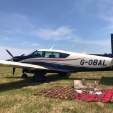

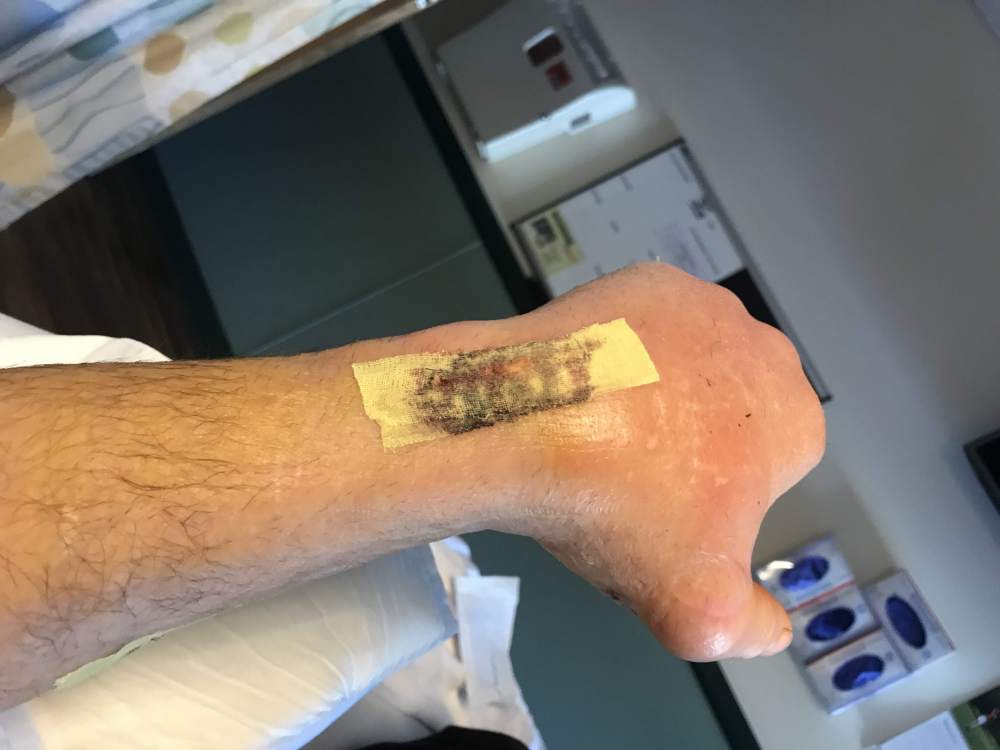
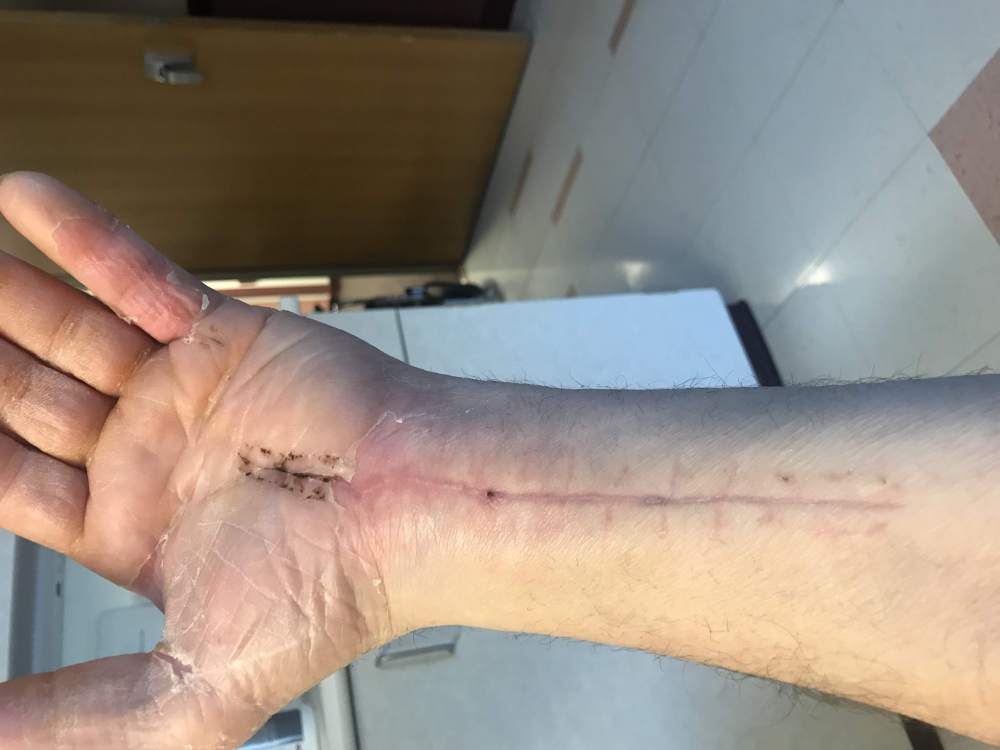
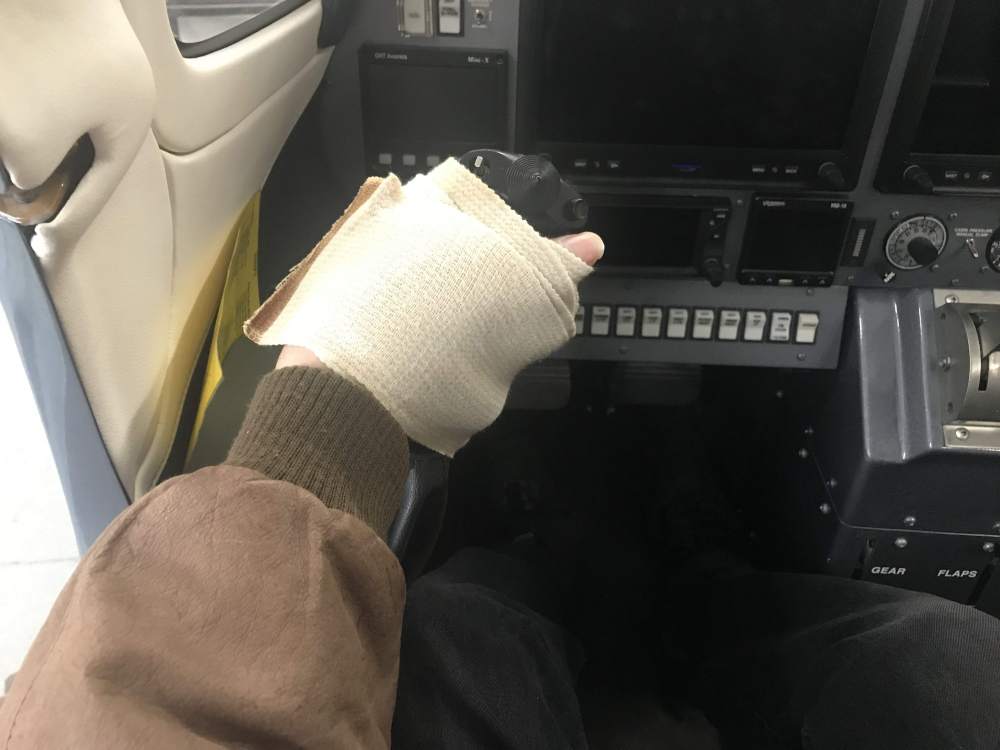
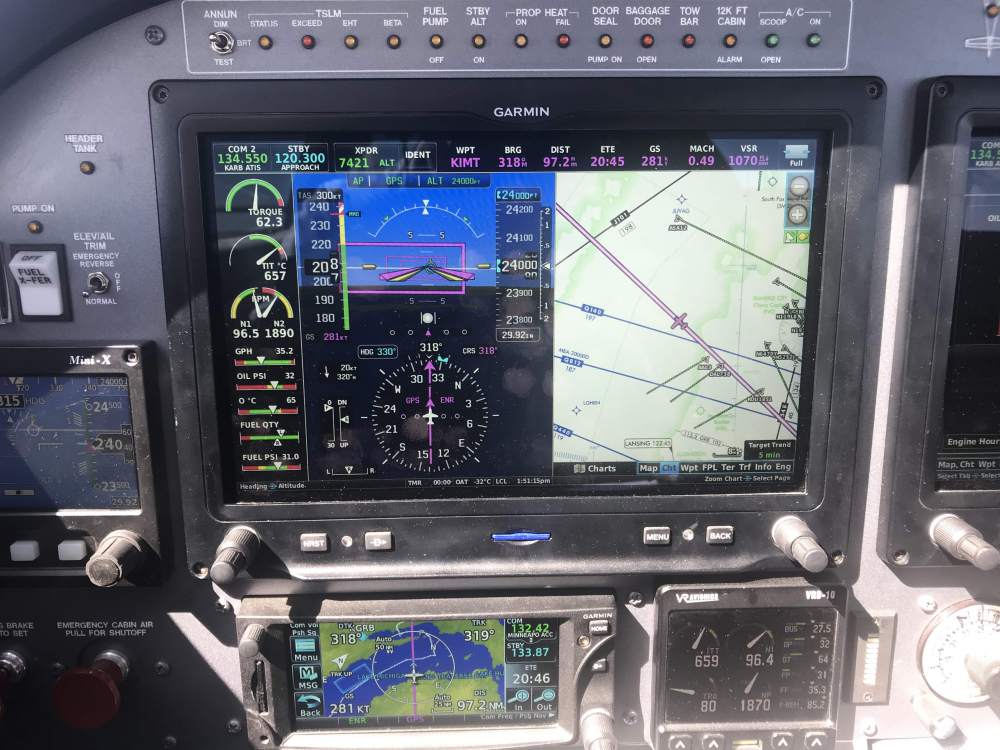
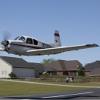
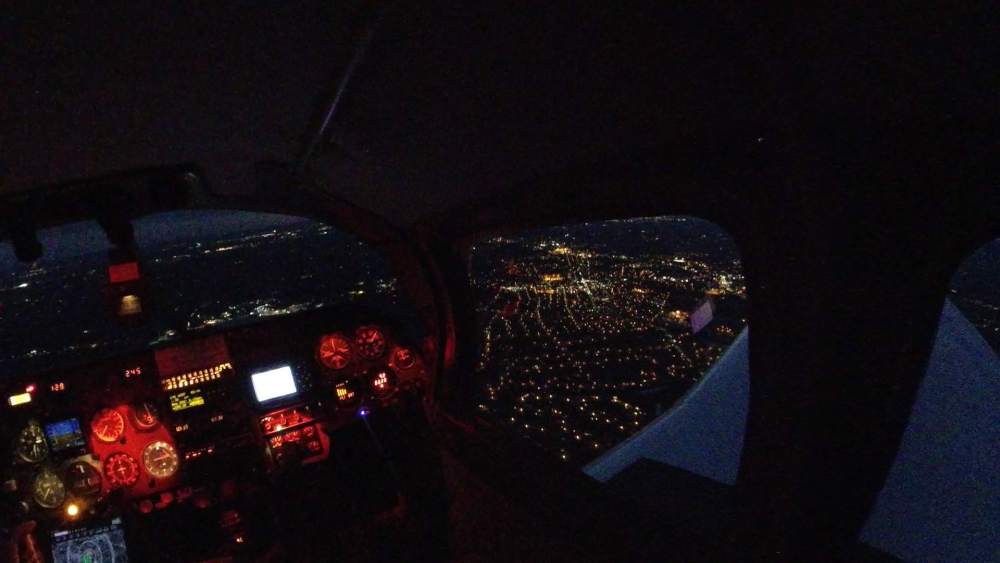

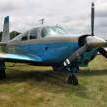



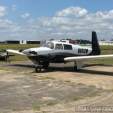







.thumb.png.7c67574d7b28f67b0b4a17760919b1ac.png)



